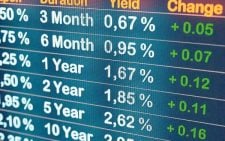Why Kenya’s economy grew slower than expected in Q3

Suppressed growth of manufacturing, transport, electricity and water supply sectors saw the country post reduced economic growth in the third quarter of 2019, compared to a similar period in the previous year.
Data released by the Kenya National Bureau of Statistics (KNBS) says these factors made real gross domestic product (GDP) to expand by 5.1 per cent in the quarter compared to 6.4 per cent growth recorded in the third quarter of 2018.
At 5.1 per cent, the growth rate is one of the worst Q3 performances since 2015, only better than the 4.5 per cent recorded in 2017, adds the KNBS report.
“Overall performance was occasioned by relatively slower growth in activities of manufacturing (3.1 per cent) electricity and water supply (4.9 per cent) construction (6.6 per cent) wholesale and retail trade (4.7 per cent) and transportation and storage (7.1 per cent) relative to notable performances recorded in the same quarter of 2018,” it read in part.
Suppressed growth
“The deceleration in overall growth was mainly on account of suppressed growth in most sectors of the economy,” it reads.
This compares poorly with Q3, 2018 when the manufacturing sector grew by 4.6 per cent, electricity and water supply by 7.8 per cent, construction 7 per cent, transportation and storage by 9 per cent.
Economic growth was further hampered by subdued performance in agriculture, a key sector of the economy, according to the report.
“The sector’s gross value added is expected to have expanded by 3.2 per cent during the review quarter compared to 6.9 per cent in the third quarter of 2018. The sector’s growth was hampered by notable drop in production of key crops during the period under review,” the report reads.
During the period, the volume of tea produced in the country reduced by 9.6 per cent to 104.2,000 tonnes down from 115.2 produced same period in 2018 while sugar cane production declined by 21 per cent to stand at 873.6,000 tonnes down from 1252.4,000 tonnes recorded in 2018.
However, coffee production, cut flower exports and milk delivery to processors increased by 19.8 per cent, 10.6 per cent and 15.8 per cent respectively.
Some sectors of the economy, however, defied the general trend of decline to post an improved performance.
Financial and insurance grew by 5.6 per cent up from 5.3 per cent posted in 2018 while mining and real estate grew by 4.3 per cent and 4.9 per cent respectively.
Tough year
The report confirms a widespread notion that 2019 was a tough year economically raising fears that the suppressed growth could result in increased economic pressure going forward.
“During the review quarter, macroeconomic indicators showed mixed performances but largely pointed to reduced economic activity compared to the third quarter of 2018,” the report says.
In the same period, the country’s current account deficit narrowed by 7.6 per cent to stand at Sh101 billion down from Sh109.3 billion in the third quarter of 2018. Current account deficit refers to a situation where the value of goods and services a country imports exceeds the value of the products its exports.
Kenya’s merchandise trade balance (difference in value between imported and exported goods) improved from a Sh254.3 billion deficit in third quarter of 2018 to Sh237.3 billion in Q3 2019, resulting from a 5.3 per cent decline in imports and a three per cent decline in exports.
Unlike trade in goods, trade in services recorded a surplus, meaning the country made more from exporting services than it lost importing the same.
“In the Q3 2019, international trade in service receipts increased by one per cent while service payment grew by 2.5 per cent resulting in 2.4 per cent decline in the net inflows,” says the report.













